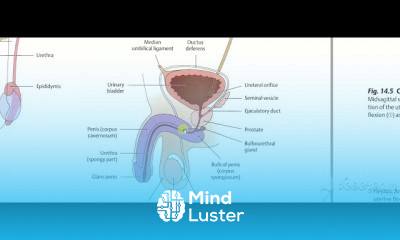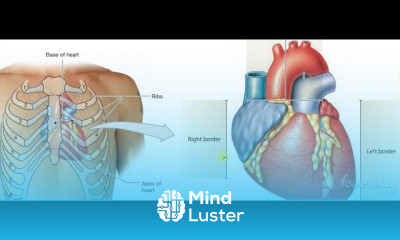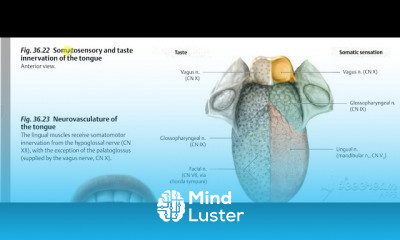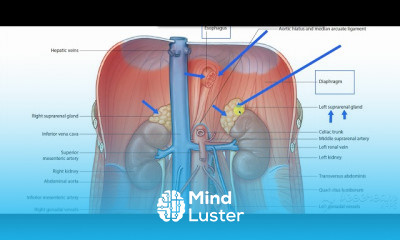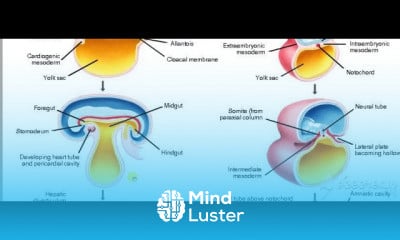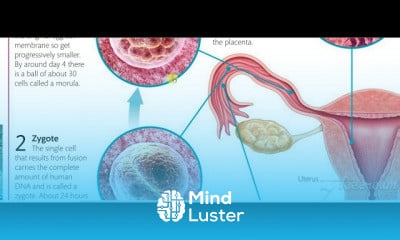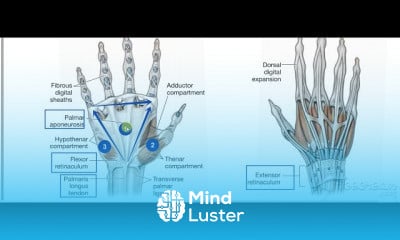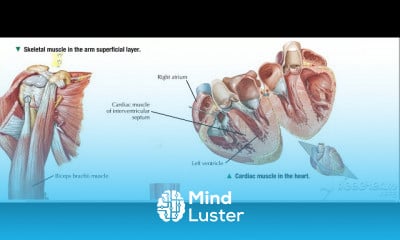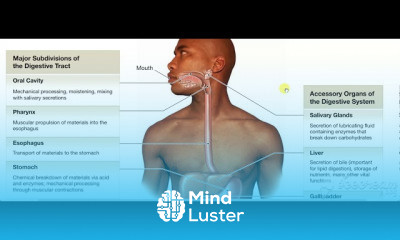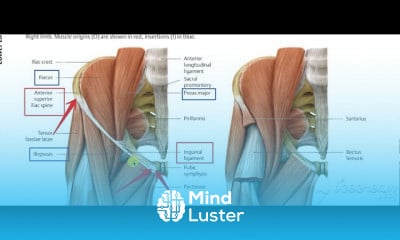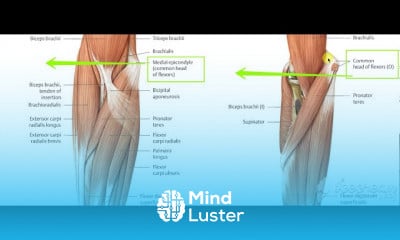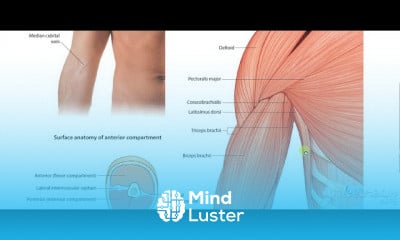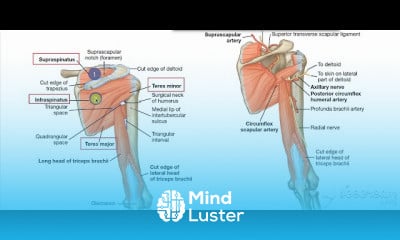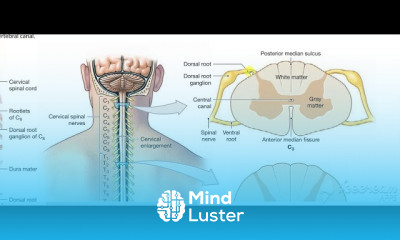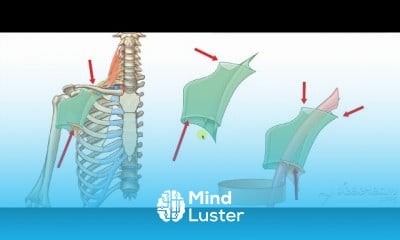Typical intercostal nerves 6
Share your inquiries now with community members
Click Here
Sign up Now
Lessons List | 100
Lesson
Show More
Lessons
Comments
Related Courses in Medical
Course Description
The respiratory system (also respiratory apparatus, ventilatory system) is a biological system consisting of specific organs and structures used for gas exchange in animals and plants. The anatomy and physiology that make this happen varies greatly, depending on the size of the organism, the environment in which it lives and its evolutionary history. In land animals the respiratory surface is internalized as linings of the lungs. Gas exchange in the lungs occurs in millions of small air sacs; in mammals and reptiles these are called alveoli, and in birds they are known as atria. These microscopic air sacs have a very rich blood supply, thus bringing the air into close contact with the blood. These air sacs communicate with the external environment via a system of airways, or hollow tubes, of which the largest is the trachea, which branches in the middle of the chest into the two main bronchi. These enter the lungs where they branch into progressively narrower secondary and tertiary bronchi that branch into numerous smaller tubes, the bronchioles. In birds the bronchioles are termed parabronchi. It is the bronchioles, or parabronchi that generally open into the microscopic alveoli in mammals and atria in birds. Air has to be pumped from the environment into the alveoli or atria by the process of breathing which involves the muscles of respiration.
In most fish, and a number of other aquatic animals (both vertebrates and invertebrates) the respiratory system consists of gills, which are either partially or completely external organs, bathed in the watery environment. This water flows over the gills by a variety of active or passive means. Gas exchange takes place in the gills which consist of thin or very flat filaments and lammelae which expose a very large surface area of highly vascularized tissue to the water.
Other animals, such as insects, have respiratory systems with very simple anatomical features, and in amphibians even the skin plays a vital role in gas exchange. Plants also have respiratory systems but the directionality of gas exchange can be opposite to that in animals. The respiratory system in plants includes anatomical features such as stomata, that are found in various parts of the plant.
Trends
French
Graphic Design | Photoshop
Créer des logos avec illustrator
Web Design for Beginners
Graphic design tools for beginners
Logo Design
Accounting Finance course
l anglais
Graphic Design Basics
Excel Accounting and Finance course
Création d un logotype avec Illustrator
Financial Accounting
Web Design Using HTML CSS
La logique booléenne
Customizing type for logos
Figma glassmorphism sidebar design
Mastering logo design in illustrator
Formation efficace à l écoute de l
Human Psychology
Digital Marketing From Scratch
Recent
l anglais
Compétences en communication
Commerce électronique
aux bordures en CSS
JavaScript variables et opérateurs
aux variables en algorithmique
à la validation HTML
aux structures de contrôle en PHP
la programmation orientée objet en PHP
la barre de recherche PHP
AJAX avec JavaScript
la programmation orientée objet
l API Canvas en JavaScript
aux systèmes numériques
tableaux à deux dimensions
La logique booléenne
aux frameworks Node js
la programmation Python
à React js
Créer des logos avec illustrator




